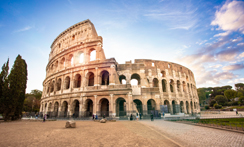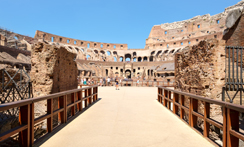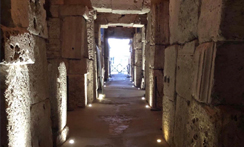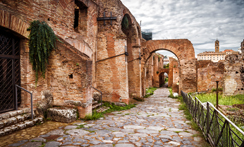Overview
The Underground or hypogeum of the colosseum is the backstage area where the most important work was done. When we think of animal hunts and gladiator hunts, we forget about the hundreds of workers and slaves backstage coordinating the appearance of men and animals on the arena as if by magic. The underground was the domain of the animals, props, lifts and ramps that made the special effects of the games. It is also where most of the gladiators entered the colosseum through an underground passage linked to their barracks and training area.
Highlights
Gladiator tunnel
Square arches
Corridors for the lift shafts
Reconstructed Lift
Underground water source
GESCHICHTE
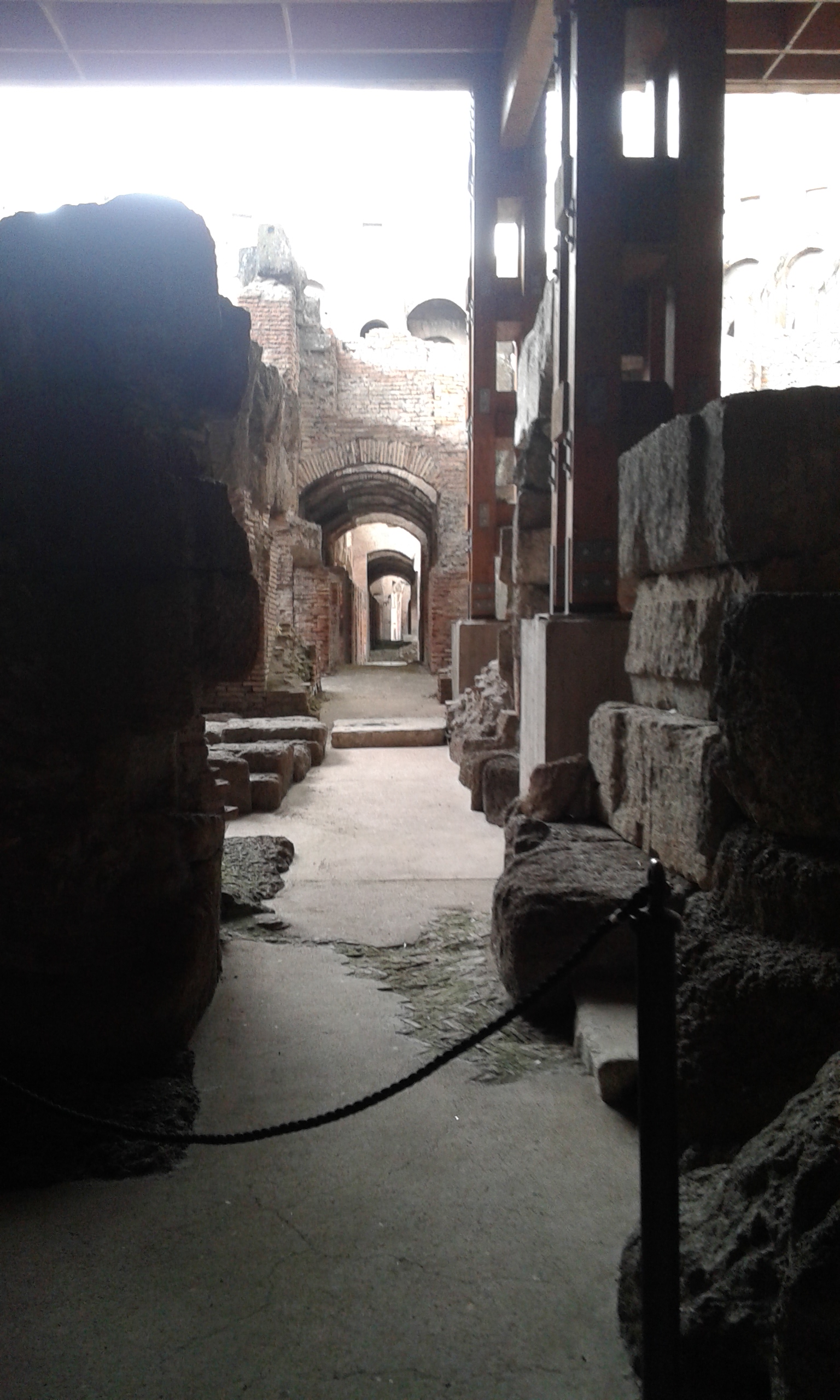
The exact dates of when the hypogeum or underground was started or completed are unknown but they are attributed to the emperor Domitian around 10 years after the completion of the colosseum. The underground is where machinery was used to raise animals and men to the arena. The design has a large central ramp running down the middle, with corridors on either side. In all there are 15 corridors which initially held 28 lifts; by the 2nd century there were at least 60 lifts; in fact, there are at least 5 phases of reconstruction. Thanks to the work of a German architect, in 2015 a replica hand-operated lift was created and inserted into the underground.
Visiting the arena today means you can descend into the belly of the colosseum to see how the underground was used. If you are an architecture or engineering buff this is a must. The underground of the colosseum is surprisingly clean and white and has corridors of square arches which held up the arena. As you descend, you will pass a corridor that the gladiators used to enter the underground from the main barracks the Ludus Magnus across the road. You will see niches where animals were kept caged waiting for their grand entrance onto the arena. From the underground you can see up through the large central area where a huge sliding rap allowed the movement of large stage sets to be raised on the arena. Most interesting is the reconstructed lift or elevator which was operated by 8 men to raise a half ton cage to the surface.
You can also imagine a different side to the colosseum, here you can appreciate what it must have been like for the hundreds of slaves working tirelessly operating lifts and pulleys to pull off the greatest show on earth. Standing underneath the reconstructed arena you can imagine what a hellhole the ‘back-stage’ really was – a hot, cramped, stinking mess of men, animals, flies and smoke.
You can also appreciate the ingenuity of the building; you will see an underground stream which still connects to the drainage system.
Interesting facts
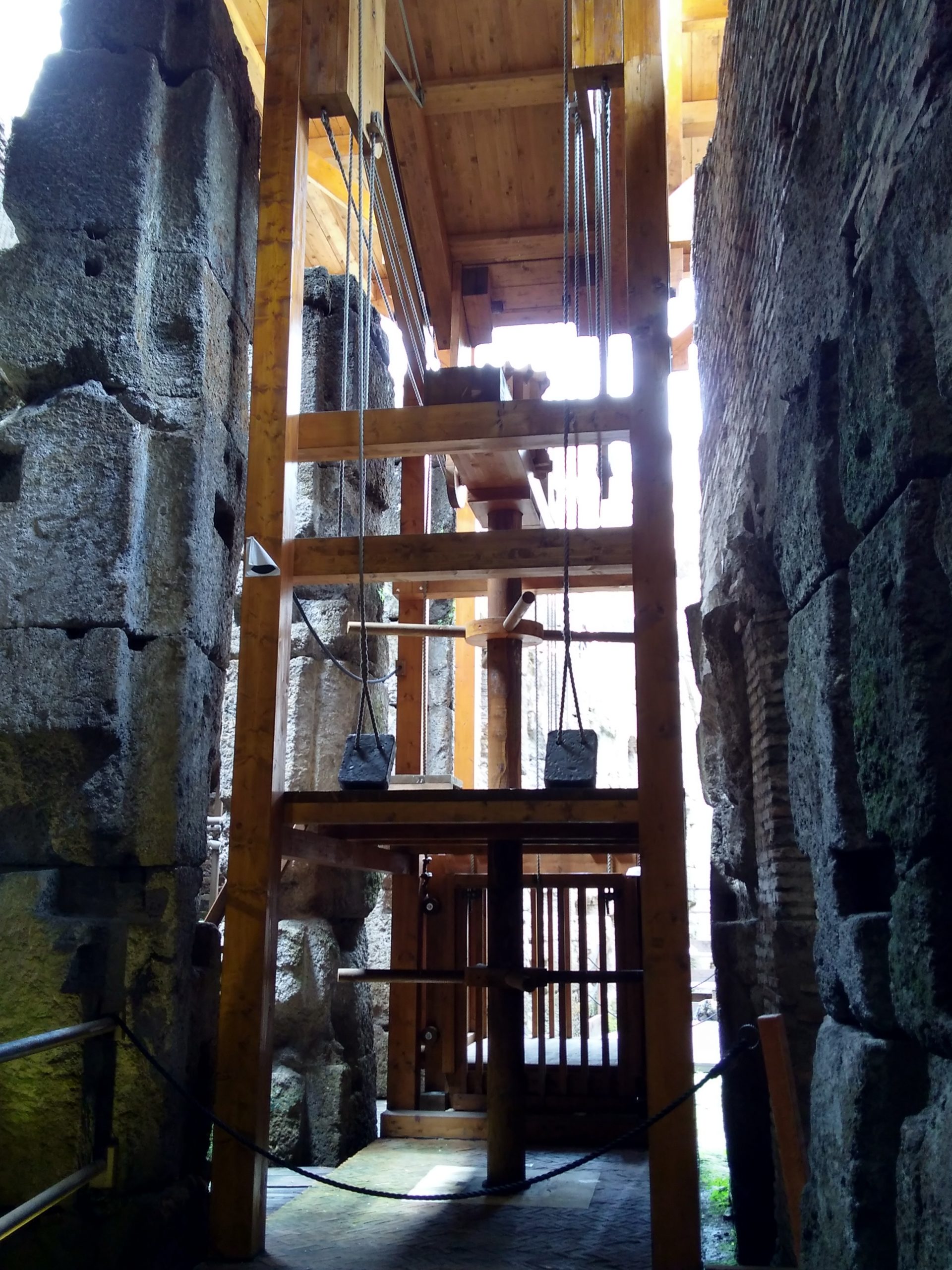
The Romans are famous for their use of the arch, but in the colosseum underground you can see a rare example of square arches with their keystones still in place after 1900 years.
Gladiators waiting to fight came directly into the underground from the Ludus Magnus – the barracks and training ground across and under the modern road. Access is no longer possible to the Ludus Magnus as a modern road and sewer block the way, but we can still see the door where the corridor entered the colosseum underground.
As well as lifts, the central long axis of the underground is thought to have had large tilting ramps that could lift or slide huge pieces of scenery up to the surface.
The underground was filled some time during the late 6th century. Excavations found numerous sarcophagi which show it was used as a cemetery for a short time before being covered over.
The reconstructed lift in the underground added in 2015 was made with the same material and tools the ancient Romans would have used. It weighs over 2 tons; the cage alone weighs ½ a ton and that is without an animal in it!
Frequently Asked Questions
What was the underground for? It was the back stage, this is where the animal cages were, some storage for equipment and movable ramps and machinery for lifting animals and men onto the arena.
What is all the brickwork? The brick walls in the underground were corridors which had lift shafts with wooden lifts to bring animals onto the arena.
How many lifts were there? In the beginning 28 lifts, by the 2nd century they were increased to 40 then 60 lifts. Each one was numbered and the entrance onto the arena probably choreographed.
Where were the animals kept? Around the edges of the underground there are a number of spaces that would have had caged fronts to them. Some animals were kept in these cages, larger animals would have been brought to the Colosseum at the last minute.
Did they have naval battles in the Colosseum?Scholars cannot agree on the spectacles involving water in the Colosseum. The problem is there is not enough water proofing concrete in the hypogeum or underground and the substructures don’t allow space. If they filled the colosseum with water it can only have been in the first ten years before Domitian built the hypogeum.
